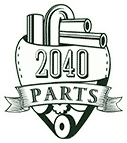Auto Meter 4828 Carbon Fiber Ultra-lite 0-2,000 Psi, 2 5/8" Analog Gauges - on 2040-parts.com
Mount Pleasant, Michigan, US
Other for Sale
 2 5/8" empty/full auto meter 4418 ultra-lite analog gauges16 ohms/158 ohms -(US $58.91)
2 5/8" empty/full auto meter 4418 ultra-lite analog gauges16 ohms/158 ohms -(US $58.91) Joes racing 11216 - side view 3" mirror 2" clamp (US $49.95)
Joes racing 11216 - side view 3" mirror 2" clamp (US $49.95) Longacre racing products 44418 accutech analog gauge kits 2 5/8" - lon44418(US $229.91)
Longacre racing products 44418 accutech analog gauge kits 2 5/8" - lon44418(US $229.91) Longacre racing products 46515 water temperature gauges 100-280 degrees f 2 5/8"(US $46.91)
Longacre racing products 46515 water temperature gauges 100-280 degrees f 2 5/8"(US $46.91) Longacre racing products 46515 water temperature gauges 100-280 degrees f 2 5/8"(US $46.91)
Longacre racing products 46515 water temperature gauges 100-280 degrees f 2 5/8"(US $46.91) Longacre racing products 44418 accutech analog gauge kits 2 5/8" - lon44418(US $229.91)
Longacre racing products 44418 accutech analog gauge kits 2 5/8" - lon44418(US $229.91)
Auto Union sale scotched
Mon, 19 Mar 2007By Jack Carfrae Motor Industry 19 March 2007 02:35 Christie’s has pulled the ultra-rare 1939 Auto Union Type D grand prix car from auction this month. It had been expected to hit a new record of nearly £8 million. As reported previously, the Auto Union was attracting great interest because it is one of only two surviving examples from the late 1930s.
Revealed: the cheapest and most expensive cars to fuel
Thu, 28 Aug 2014Running a car can be an expensive business, with fuel a major contributing factor, especially if you happen to cover long distances. As we know, fuel isn’t cheap. Fortunately, independent car cost experts CAP constantly collect millions of pieces of data about thousands of new and used cars in the UK, helping to produce its Total Cost of Motoring analysis.
Japan Car: Designs for a Crowded Globe
Thu, 04 Dec 2008The Science Museum in London, UK is hosting the Japan Car: Designs for the Crowed Globe exhibition, sponsored by seven Japanese automobile manufacturers. An exploration of the car as a 'mobile cell', the exhibition has been conceived by graphic designer Kenya Hara and architect Shigeru Ban to show how Japanese design reflects the 'soil and spirit' of Japan, depicted by concept cars and models specific to the Japanese market. Speaking to Car Design News, Shigeru Ban explained how the automobile was chosen as the central element to the exhibition because it is a reflection of Japanese culture and tradition.

